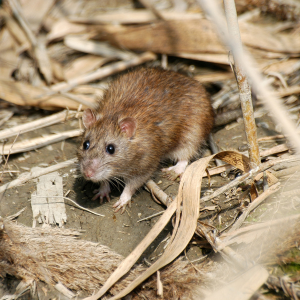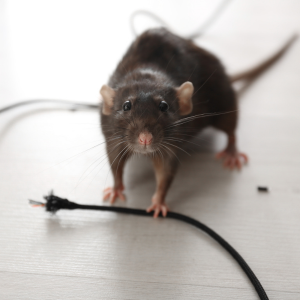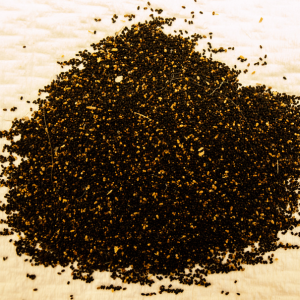


Rodent infestations are a common nuisance for homeowners in urban and suburban areas, and St. Louis is no exception. With its mix of old and new homes, nearby parks, and proximity to water sources, the city provides a perfect environment for rodents to thrive. Identifying a rodent infestation early is essential to preventing structural damage and health risks. In this guide, we’ll cover the key signs of a rodent problem and offer preventive measures to protect your home.
Common Rodents Found in St. Louis Homes
Norway Rats
Norway rats are larger rodents known for burrowing in basements, sewer systems, and outdoor areas. These rats can be identified by their brown fur, long tails, and blunt noses. They prefer to nest near ground level and are active during the night.
House Mice
House mice are smaller rodents with gray fur and large ears. They are often found indoors, nesting in walls, attics, and kitchens. House mice are excellent climbers and can squeeze through tiny openings, making them hard to keep out.
Roof Rats
Roof rats are more agile than Norway rats and prefer elevated areas like attics, rafters, and trees. These rodents are common in older St. Louis homes located near parks or water sources. They are smaller than Norway rats but just as destructive.
Physical Signs of a Rodent Infestation
Droppings
Rodent droppings are one of the most obvious signs of an infestation. Mouse droppings are small, black, and rod-shaped, while rat droppings are larger and more blunt. You’ll often find droppings near food sources, along walls, or inside cabinets.
Gnaw Marks and Chewed Items
Rodents gnaw on wood, plastic, and electrical wires to wear down their teeth. Fresh gnaw marks appear light-colored, while older marks are darker. Inspect furniture, appliances, and electrical cords for signs of chewing.
Nests and Burrows
Rodents create nests using soft materials like paper, fabric, and insulation. Nests are typically found behind appliances, in attics, basements, or inside walls. Burrows are more common with Norway rats, which dig tunnels outdoors and indoors.
Strange Noises and Smells
Nocturnal Activity Sounds
If you hear scratching, squeaking, or scurrying sounds at night, you likely have rodents in your walls or ceiling. Since most rodents are nocturnal, activity tends to increase after dark.
Unusual Odors
Rodents leave behind a musky odor caused by urine and droppings. In cases of severe infestations, you may also notice the unpleasant smell of decomposing rodent bodies.
Tracks and Trails
Dusty Footprints or Tail Marks
Rodents leave behind footprints and tail drag marks in dusty areas. You can sprinkle flour or baby powder along suspected rodent paths to confirm their presence.
Smudge Marks on Walls and Furniture
Rodents rub their oily fur against walls and furniture, leaving behind greasy smudge marks. These marks are often found along frequently traveled paths, such as along baseboards or in cabinets.
Unexplained Property Damage
Damage to Food Containers
Chewed boxes, bags, and spilled food are signs of rodent activity. Mice and rats are known to tear through food packaging in search of nourishment.
Electrical and Plumbing Issues
Rodents chewing on electrical wires can cause fires or power outages. They may also gnaw on plumbing pipes, leading to leaks or water damage.
Rodent Droppings as Health Hazards
Rodents carry diseases that can pose serious health risks to humans, including Hantavirus and Salmonella. Their droppings and nests can contaminate surfaces and food, increasing the likelihood of illness. Avoid direct contact with rodent waste to minimize health risks.
Factors That Increase Risk of Infestation in St. Louis
Seasonal Patterns
Rodent activity increases in St. Louis during the fall and winter months as rodents seek shelter from the cold. Homes with poor insulation or open entry points are more susceptible.
Proximity to Parks, Water Bodies, and Urban Areas
Homes near the Mississippi River, Forest Park, or other green spaces have a higher chance of rodent infestations. Rodents are drawn to areas with easy access to food and water.
Poor Home Maintenance
Cracks in walls, open windows, and clutter provide easy access and shelter for rodents. Regular maintenance can significantly reduce the risk of an infestation.
Preventive Measures for St. Louis Homes
Sealing Entry Points
Use caulk, steel wool, and metal screens to seal gaps in walls, windows, and doors. Even small holes can provide access for mice and rats.
Keeping a Clean Environment
Maintain proper waste management by sealing trash cans and storing food in airtight containers. Cleaning up crumbs and spills also deters rodents.
Regular Inspection and Maintenance
Schedule regular pest control inspections to catch infestations early. Routine maintenance of your home helps prevent entry points from forming.
Why Choose STL Pest Control for Rodent Removal
When facing a rodent infestation, hiring an experienced pest control service is essential. STL Pest Control stands out as one of the most trusted names in St. Louis for several reasons:
- Experienced Team: With over 30 years of experience, STL Pest Control has deep expertise in handling rodent infestations of all sizes.
- Comprehensive Services: From inspection to elimination and prevention, STL Pest Control offers full-service solutions tailored to your home’s needs.
- Local Knowledge: STL Pest Control understands the unique challenges posed by St. Louis homes, including seasonal rodent activity and environmental risks.
- Eco-Friendly Solutions: The company offers eco-friendly pest control options that are safe for pets and children.
- Emergency Response: For severe infestations, STL Pest Control provides quick response services to minimize damage and health risks.
Contact STL Pest Control today to schedule an inspection and protect your home from rodents.
Conclusion
Early detection of a rodent infestation can save you from costly repairs and health hazards. St. Louis homeowners should remain vigilant, especially during the colder months, and take action at the first sign of trouble. If DIY methods fail, don’t hesitate to contact STL Pest Control for professional assistance.
FAQs
- What are the most common rodents in St. Louis homes? Norway rats, house mice, and roof rats are frequently found in the area.
- How do I know if I have rats or mice? Check the size and shape of droppings and listen for scratching noises at night.
- Can rodents cause health problems? Yes, rodents can spread diseases like Hantavirus and Salmonella.
- When is the best time to inspect for rodents in St. Louis? Rodent activity increases in the fall and winter months.
- Should I call an exterminator for a small infestation? If the issue persists after DIY efforts, it’s best to consult a pest control professional.

